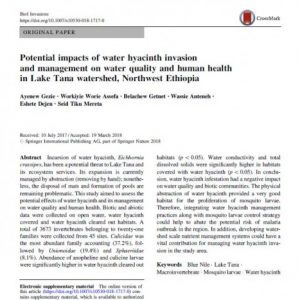Resource

Potential impacts of water hyacinth invasion and management on water quality and human health in Lake Tana watershed, Northern Ethiopia
Authors: Ayenew Gezie, Workiyie Worie Assefa, Balechew Getnet, Wassie Anteneh, Eshete Dejen, Seid Tiku Mereta
Date: 2018
Type: Journal Article
Abstract:
Incursion of water hyacinth, Eichhornia crassipes, has been a potential threat to Lake Tana and its ecosystem services. Its expansion is currently managed by abstraction (removing by hand); nonetheless, the disposal of mats and formation of pools are remaining problematic. This study aimed to assess the potential effects of water hyacinth and its management on water quality and human health. Biotic and abiotic data were collected on open water, water hyacinth covered and water hyacinth cleared out habitats. A total of 3673 invertebrates belonging to twenty-one families were collected from 45 sites. Culicidae was the most abundant family accounting (37.2%), followed by Unionoidae (19.4%) and Sphaeriidae (8.1%). Abundance of anopheline and culicine larvae were significantly higher in water hyacinth cleared out habitats (p < 0.05). Water conductivity and total dissolved solids were significantly higher in habitats covered with water hyacinth (p < 0.05). In conclusion, water hyacinth infestation had a negative impact on water quality and biotic communities. The physical abstraction of water hyacinth provided a very good habitat for the proliferation of mosquito larvae. Therefore, integrating water hyacinth management practices along with mosquito larvae control strategy could help to abate the potential risk of malaria outbreak in the region. In addition, developing watershed scale nutrient management systems could have a vital contribution for managing water hyacinth invasion in the study area.
Resource file: Potential impacts of water hyacinth invasion-2018
